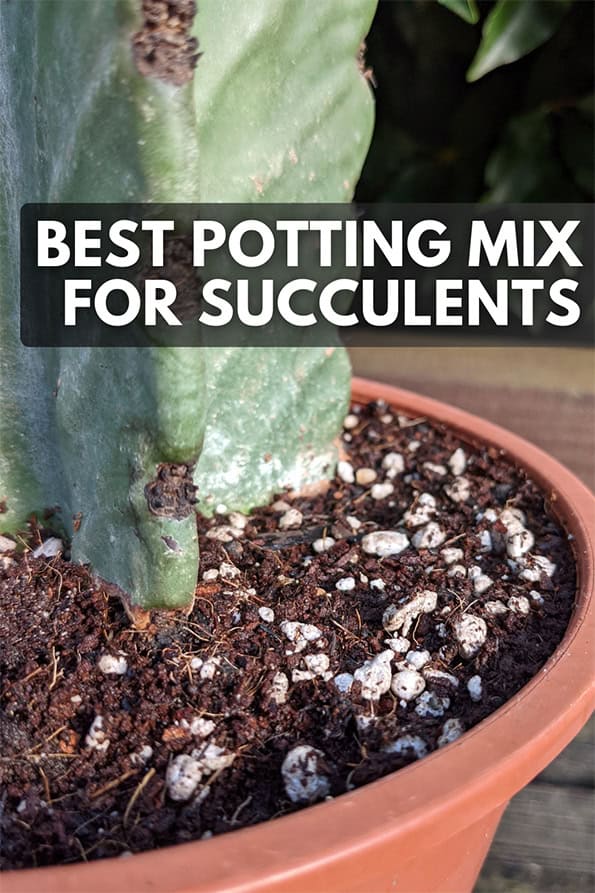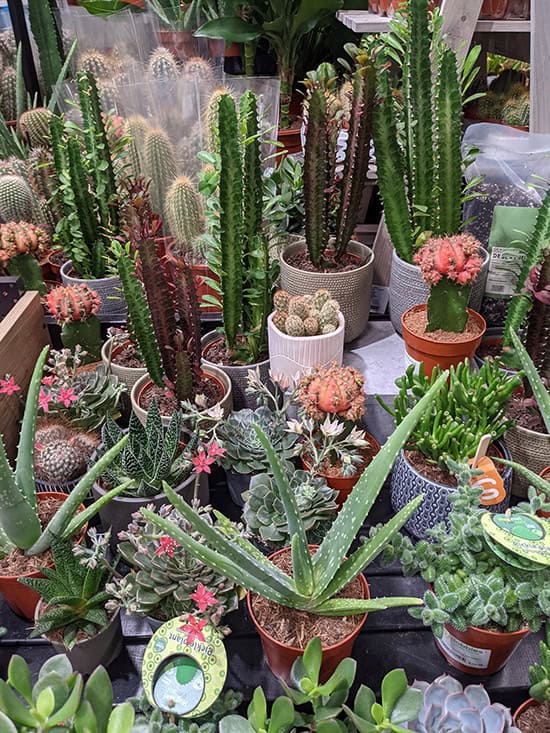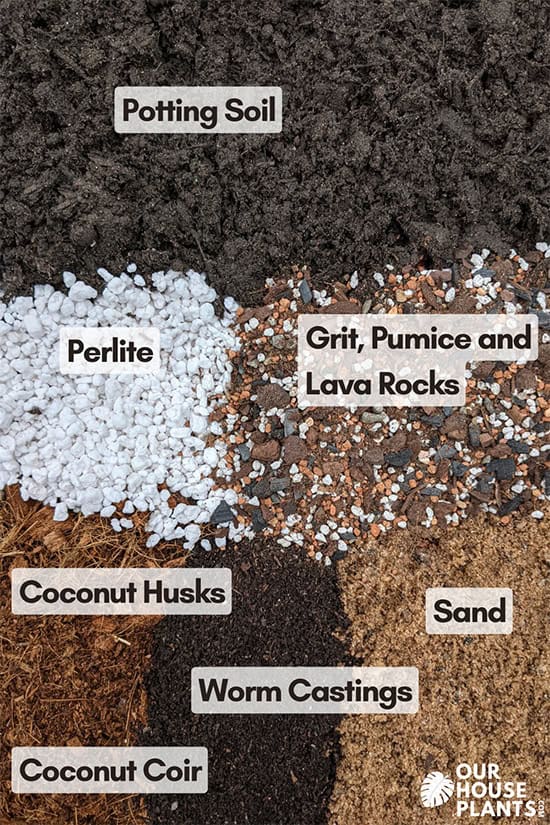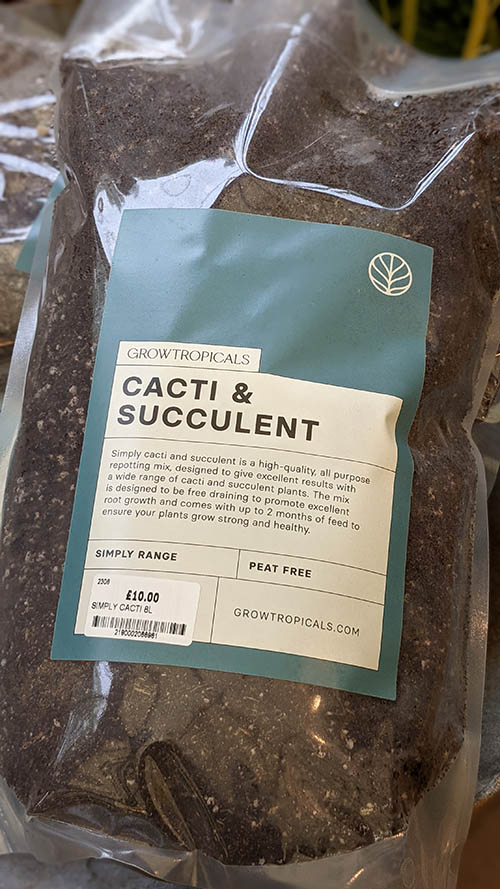Over the last few decades, succulents have become increasingly fashionable and popular among plant enthusiasts. They're resilient plants known for their striking appearance and low-maintenance nature.
The best potting mix for succulents is one that is well-draining, doesn't hold too much water and contains inorganic materials to let this happen. In most cases if you provide this, you'll have a very free draining soil where your plants will thrive.
However it's a little more complicated than that. So in this article, I'll explore the best potting mixes for succulents and how to create an ideal root environment for their growth.
Achieving the perfect potting mix for succulents can be challenging, especially if you are new to houseplants. The secret is to try to copy their natural environment by using the right soil and ensuring it has added key ingredients.

Hi, I'm Tom!
If you're like me and enjoy the challenge of growing houseplants and getting them to thrive, then Ourhouseplants can help. This website shares my knowledge and years of growing plants and provides (hopefully) helpful advice on properly caring for your indoor plant friends.
Succulents originate from hot, arid environments with sporadic and low rainfall, making it difficult for life to prosper. Most succulents are adapted to survive in sandy, well-drained soils. A plant that can do this is known as an Xerophyte.
Generally succulents will have small leaves, and thick waxy skin to reduce the amount of water loss through the leaves (transpiration). Most can also store water directly, which can then be used in times of drought to keep them going.
A major draw for many owners is that most succulents can cope for weeks or longer without watering, whereas other houseplants can't. Plants with adaptations that allow them to live in hot and dry conditions with limited water are called xerophytic.
The thing is, succulents are pretty good at getting by with low amounts of water. In fact, their adaptations are so effective, that too much water, or "overwatering" is the number one reason, by a long way, that people lose these plants.
When they're grown as houseplants, the key to healthy indoor succulent plants is providing three primary environmental conditions that mimic their natural habitat.
Each time you fail to deliver on one of the three conditions, you increase the chances of running into problems. The rest of this article will focus on the potting mix element, but I have separate guides dealing with light and temperature if you need them.
Indoor succulents will grow in a variety of soil mixes perfectly well. This is why you'll often find these plants for sale in shops being sold in very water retentive peat mixes.
Why do growers use peat mixes in the first place?
Peat moss is inexpensive and offers a cost-effective solution for nurseries that need to produce large quantities of plants. It has good water retention properties, beneficial for the propagation and early growth stages of succulents. Additionally, peat-based mixes are lightweight, making them easier and cheaper to handle, transport, and pot up.
The difference here, is that the original grower or nursery is an expert and doesn't make mistakes (in theory!). Although the peat mix is not ideal because it holds so much water, managing moisture levels is easier in a controlled nursery environment. The grower has complete control over the light levels and temperature.
The average grower, like you and I, has limited control over our growing environments and, if lacking experience, will often make mistakes with watering. We need to avoid this. So repotting your new plant into something more suitable after getting it home is considered best practice.
Right, let's break down the essential components for the best succulent soil mixes.
The foundations of a healthy succulent potting mix contains most or all of the above. You can use various ratios of these materials and you don't need to use every single one for the perfect blend.
Regular potting soil can be used as a base for your succulent mix. It is typically going to be made of loam, peat, compost, silt or clay. However, using it alone is a mistake as it retains too much moisture for succulents. To make it suitable for these types of plants, you need to amend it with the other components seen in the photo above.
Peat free compost is another organic collection of materials that can be added to succulent soil mixes or can provide the base. They tend to be made up of organic materials like pine bark, wood waste, bark, green waste, and composted garden waste.
It holds water, but the chunky material improves drainage and adds organic matter to the soil, promoting healthy root development. However what they contain varies greatly and the quality can be unpredictable.
Coconut coir, or coco coir, is a very popular choice for succulent soil mixes. It's very fine and often used as a substitute to peat and is arguably better than peat free compost because you know exactly what you're getting. The husks are the same material but less processed so they're larger. Similar to orchard bark.
It's essentially a sustainable, organic material that provides good drainage and retains some moisture without becoming waterlogged. Both Coconut coir and the husks improves soil aeration and they're less prone to compacting over time.
Coarse sand and grit are often a crucial ingredient in succulent soil. They both drastically improve drainage and aeration, preventing soil compaction and ensuring that water does not linger around the roots. This type of material helps create the gritty mix that succulents need.
Perlite, pumice and lava rocks are lightweight, inorganic materials that also improve soil drainage and aeration. Perlite is a type of volcanic glass that is lightweight and porous. Lava rock and pumice are both types of volcanic rock that provide excellent drainage. These materials are essential for creating a well-draining soil mix.
If your mix has a lot of inorganic material, it will probably only have a small amount of fertilizer for the plant to use for growth and general good health. To combat this, you can provide a liquid fertilizer a few months after repotting it or once the plant has established.
Others chose to improve the succulent soil mix at the start, when mixing their own. You can do this by adding small amounts (less 5% of the total mix) of the following additives. Again the following additions are optional but I like to add in at least one.
Worm castings are a natural, slow-release fertilizer that adds small amounts of nutrients to the soil without overwhelming the plant. They improve soil structure and promote healthy growth.
Blood, fish and bone is another organic fertilizer that provides essential nutrients, particularly phosphorus, which supports root development.
This is quite an old fashioned product and it does involve animal remains. Many people don't like using it for this reason and if you have cats or dogs they're often attracted to the smell. In it's place you can use a slow release cruelty free chemical Fertilizer with equally as impressive results.
You can buy ready-made succulent soil mixes, but if you have many plants, these mixes can be used up quickly and will be expensive in the long run.
Sometimes it's cheaper to buy the base ingredients and then have a go at making your own. Doing this will let you create a potting mix for succulents that can be tailored to the specific needs of your plants and should work out cheaper over the longer term if you have lots of houseplants.
Here’s a simple recipe for a well-draining soil mix that will suit most succulents in a 50% organic, 50% inorganic ratio.
Mix these ingredients thoroughly to ensure even distribution. This blend provides the right balance of drainage, aeration, and moisture retention. It's still important that you allow the potting mix to fully dry out before you water the plant again.
If you're primarily growing cacti or the above mix takes too long to dry out, then you can make something with better drainage to make it even more free draining. This ratio will give you a 40% / 60% organic vs inorganic mix.
Different succulents may have slightly different soil needs. For example, aloe vera often prefers a mix with more sand, while cacti thrive in a gritty mix with an inorganic material as the main ingredient. Research the specific needs of your succulents to create the perfect soil mix for each type.
If you prefer not to make your own mix, many garden centers and stores like Home Depot offer ready-made succulent and cactus mixes. These mixes are formulated to provide excellent drainage and the right balance of organic and inorganic materials.
It's a little more specialist, but a garden center or houseplant shop should sell a ready made succulent potting mix based on your region. For example, Growtropicals is a popular brand in the UK, whereas Bonsai Jack is more common in the USA.
New succulent owners often make watering mistakes that can harm their plants. Here are some tips to avoid common pitfalls:
Collection of cacti and succulents for sale in nice pots but they don't have drainage holes and the surface is hidden by decorative stones.




